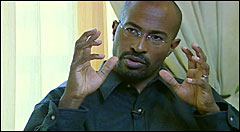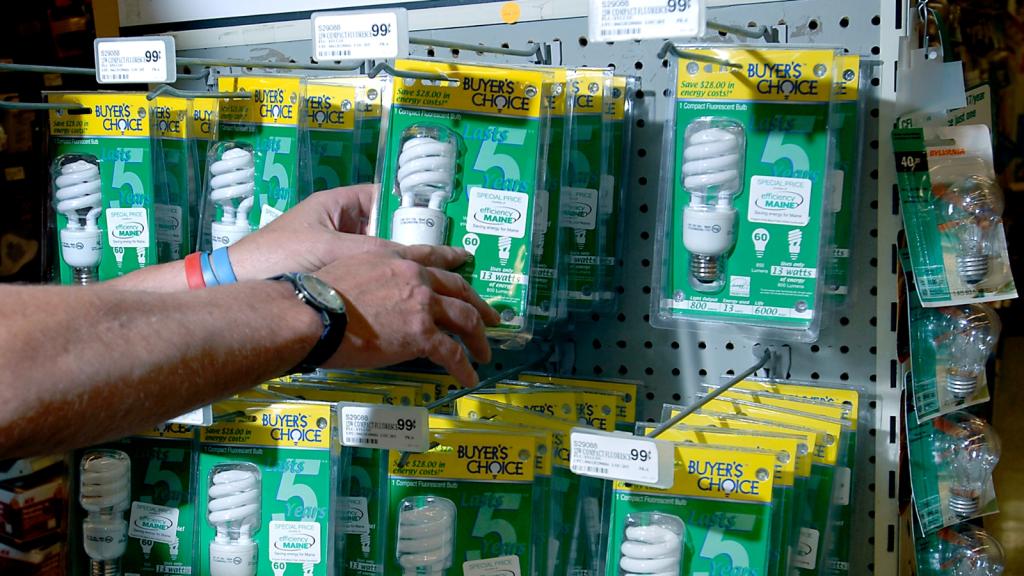For those of us who are a part of the movement for “green-collar jobs,” last Sunday’s Democratic presidential debate was a real watershed moment.

Clinton, Edwards, and Obama were in the debate of their lives. And all three of them passionately championed the importance of creating good jobs in the clean energy sector. They presented “green-collar jobs” as a way to simultaneously boost the economy and beat global warming.
Their words were like music to our ears. It felt like a victory for all of our organizations, which have been making this argument for some time. So … hats off to the Apollo Alliance, Ella Baker Center, Workforce Alliance, Center for American Progress, Sustainable South Bronx, Center on Wisconsin Strategy, 1Sky, Energy Action Coalition, Green For All, and many more.
And then yesterday The Washington Post ran a major story on green jobs, Time magazine has taken up the issue, and CNN just featured it on their Situation Room. So it is now official: our demand for “green-collar jobs” has finally broken through!
But before the concept gets watered down by its very popularity, now might be a good time to give a clear and uncompromising answer to this question: What is a green-collar job, anyway?
It is great that our leaders are offering a better future. But as this green-collar-job train begins to leave the station, it is time to confirm the destination.
Creating enough “green collar jobs” to beat global warming and create real economic opportunity for those who most need it is a tall order. It will require a major transformation of the American economy, and we must be clear about the terms of this transition. Only then will we have a yardstick to measure real progress against exciting rhetoric.
Green Collar Jobs Rebuild a Strong Middle Class
Green-collar jobs are good jobs. Like blue-collar jobs, green-collar jobs pay family wages and provide opportunities for advancement along a career track of increasing skills and wages. A job that does something for the planet, and little to nothing for the people or the economy, is not a green-collar job. The green economy cannot be built with solar sweat shops and Wal-Mart wind farms.
Green-Collar Jobs Provide Pathways Out of Poverty
Most green-collar jobs are middle-skill jobs requiring more education than high school, but less than a four-year degree — and are well within reach for lower-skilled and low-income workers as long as they have access to effective training programs and appropriate supports. We must ensure that all green-collar jobs strategies provide opportunities for low-income people to take the first step on a pathway from poverty to economic self-sufficiency.
Green-Collar Jobs Require Some New Skills (and some new thinking about old skills)
The green economy demands workers with new skill sets. Some green collar jobs — say renewable energy technicians — are brand new. But even more are existing jobs that are being transformed as industries transition to a clean energy economy: computer control operators who can cut steel for wind towers as well as for submarines; or mechanics who can fix an electric engine as well as an internal combustion engine. We need identify the specific skills the green economy demands. Then we need to invest in creating new training programs and retooling existing training programs to meet the demand.
Green-Collar Jobs Tend To Be Local Jobs
Much of the work we have to do to green our economy involves transforming the places that we live and work and the way we get around. These jobs are difficult or impossible to offshore. For instance, you can’t pick up a house, send it to China to have solar panels installed, and have it shipped back. In addition, one of the major sources of manufacturing jobs — a sector that has been extensively off-shored — are components parts for wind towers and turbines. Because of their size and related high transportation costs, they are most cost-effectively produced as near as possible to wind-farm sites. Cities and communities should begin thinking now about ways their green strategies can also create local jobs.
A Green-Collar Job Strengthens Urban and Rural Communities
Urban and rural America have both been negatively impacted over the past decades by a failure to invest in their growth — green-collar jobs provide an opportunity to reclaim these areas for the benefit of local residents. From new transit spending and energy audits in inner cities to windmills and biomass in our nation’s heartland, green jobs mean a reinvestment in the communities hardest hit in recent decades.
And By the Way … Green-Collar Jobs Save Planet Earth
This may be obvious. The “green” in green-collar is about preserving and enhancing environmental quality. Green-collar jobs are in the growing industries that are helping us kick the oil habit, curb greenhouse-gas emissions, eliminate toxins, and protect natural systems.
Green-collar workers are installing solar panels, retrofitting buildings to make them more efficient, constructing transit lines, refining waste oil into biodiesel, erecting wind farms, repairing hybrid cars, building green rooftops, planting trees, and so much more. And they are doing it today. There are already many green-collar jobs in America. But there could be so many more if we focus our economic strategies on growing a green economy.
It is exciting that the presidential candidates have taken up this banner. We must thank them for their leadership, and we must help them ensure that the green jobs of tomorrow build a green and prosperous economy for everyone, here and around the world.
I want to thank clean-energy champions Jeremy Hays, Parin Shah, Jason Walsh, Joel Rogers, and Bracken Hendricks for contributing their thoughts and words to this post.
—–
Here are some resources we pulled together on the topic:
Renewable Energy and Energy Efficiency: Economic Drivers for the 21st Century — American Solar Energy Society
Community Jobs in Green Economy — Apollo Alliance and Urban Habitat
Growing Green Collar Jobs — Urban Agenda
Oakland Green Jobs Corps — Ella Baker Center for Human Rights
Jobs in LA’s Green Technology Sector — Economic Roundtable
Also, see the green-collar jobs story on the cover of the Washington Post Style Section.
Finally, here are the references to green jobs from the NYT transcript of the South Carolina debate.
Clinton: “We need to make sure that we start jumpstarting the jobs in this country again. That’s why I want to put money into clean energy jobs, green-collar jobs … “
Edwards: “Now, one difference between what I have proposed and what my two colleagues have proposed is I have done something that not only stimulates the economy, but creates long-term benefits, investment in green infrastructure, which creates jobs. Instead of just getting money out in the short term, this will actually create jobs over the long term, create green infrastructure.”
Edwards: “What I’m saying is if we do what we should do to green the economy, if we change our unemployment insurance laws, modernize them to make them available to more people, to more Americans, if we in fact give help to the states, which gets money straight into the economy and we deal with the mortgage crisis in a serious way with a home rescue fund to provide transitional financing for those people who are about to lose their homes, all those things will stimulate the economy.”
Obama: “I think the idea of bringing jobs is important, which is why that’s central to my energy plan.”
Clinton: “As a further point, I do believe that the green-collar job piece of this is important. That’s why I have $5 billion to do it. There are programs already. Oakland, California, Mayor Dellums is working to have a green-collar job program. We could put hundreds and hundreds of young people to work right now, putting solar panels in, insulating homes.”
Clinton continued: “That would give them jobs and it would move us more quickly to a green economy. And I think that if you look at this from a jobs and justice, a stimulation and long-term planning effort, we need to lay down the markers now. And that’s why the Congress, under the leadership of a lot of the people who are chairs of committees and subcommittees who are here today are going to play a major role in this.”


